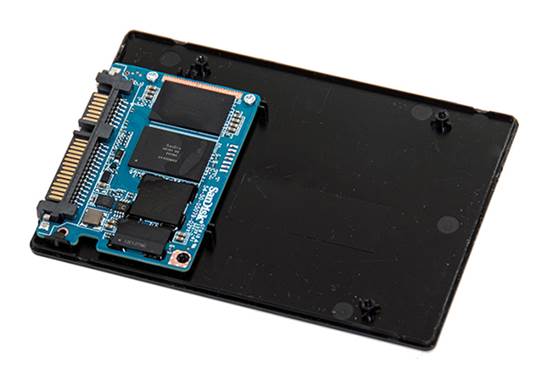Details
·
Price: $220
·
Manufacturer site: www.sandisk.com
·
Ratings: 9/10
SanDisk hasn’t been known for producing
high-end SSDs, instead concentrating its efforts on the mainstream segment of
the market. Its new drive, the Ultra Plus, has a high-end name, but it costs
just $220, or 61p-per-gigabyte. That makes this 256GB part the cheapest on test.

We
were surprised to find 19nm MLC NAND used inside this drive
SanDisk has worked to a strict budget,
then, and that means its specification is a mixed bag. We were surprised to
find 19nm MLC NAND used inside this drive. This ultra-modern manufacturing
technology is only used inside one other drive in this test, and that’s the
pricey Toshiba.
The Marvell 9175 controller is a little
less impressive, though. It’s an upgraded version of the core used in the
Crucial M4, which was a budget favorite a long time ago; we’re not confident
that it’ll be able to stand up to the OCZ Vector and Samsung 840 Pro when it
comes to pure speed.
Unfortunately, our benchmark results
illustrated the lack of speed available from this drive. Its AS SSD sequential
read and write speeds of 502MB/s and 447MB/s aren’t able to match the top
drives, and it’s middling elsewhere. Its 4KB read and write scores of 32MB/s
and 85MB/s aren’t too impressive, and the 4K-64 results of 304MB/s and 144MB/s
lag towards the bottom of this test’s results tables.

Much
quicker than traditional hard disks but won’t break the bank
The situation only worsened when we ran the
CrystalDiskMark tests. The SanDisk’s sequential read pace of 523Mb/s isn’t bad,
and its 34MB/s 4KB read result is decent, but it propped up our results table
in five of the app’s eight benchmarks – its sequential write pace of 434MB/s,
for instance, is a long way behind the 527MB/s score of the victorious Samsung
drive.
The Ultra Plus didn’t live up to its name
in ATTO Disk Benchmark either. Its minimum read and write scores of 48MB/s and
40MB/s are mediocre, but its maximum read and write results of 462MB/s and
test. That translated to poor average read and write scores of 423MB/s and
327MB/s.

The three-year warranty is a little on the
short side, but SanDisk makes up for this with its inbox bundle. As well as a
2.5” to 3.5” bracket, the Ultra Plus comes with a SATA cable too.
SanDisk’s drive isn’t the quickest, then,
with occasional flashes of pace when reading small files tempered by poor speed
in the rest of our benchmarks.
However, its low price does mean it’s good
value. If you’re searching for speed, then the superb Samsung is the best bet,
but if you’re searching for a drive that’s still much quicker than traditional
hard disks but won’t break the bank, this is a reasonable budget alternative.